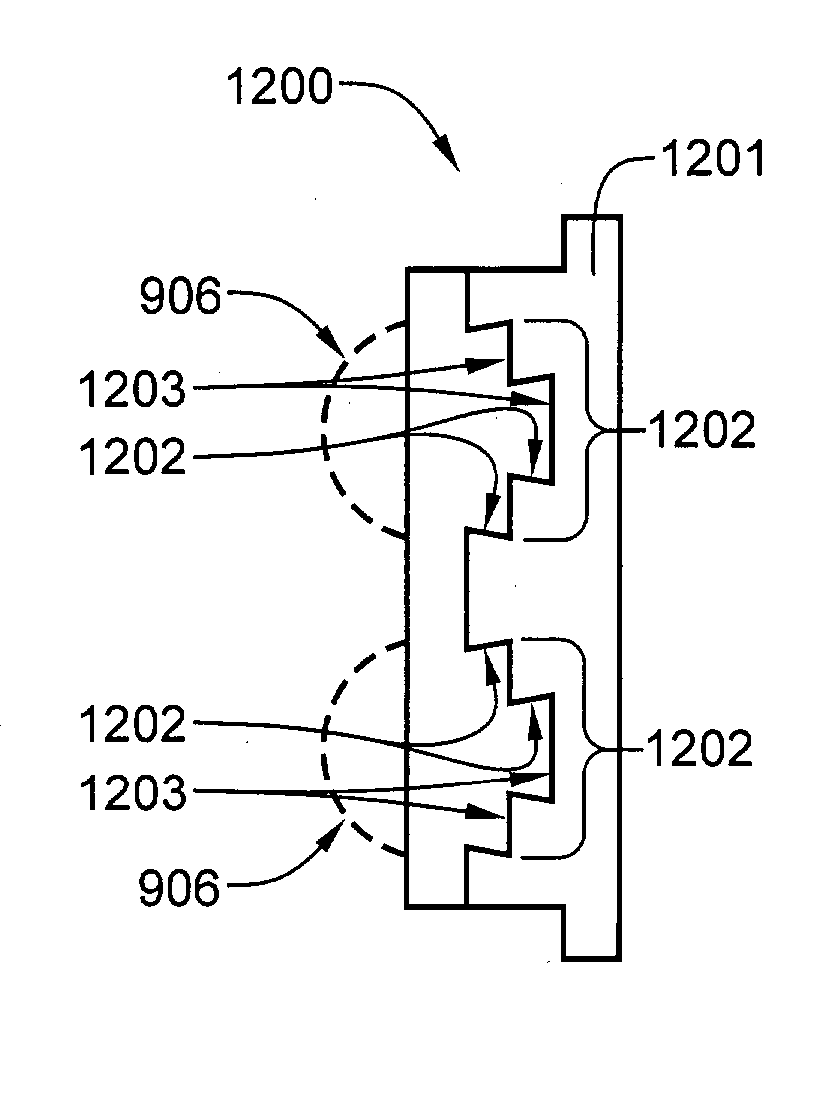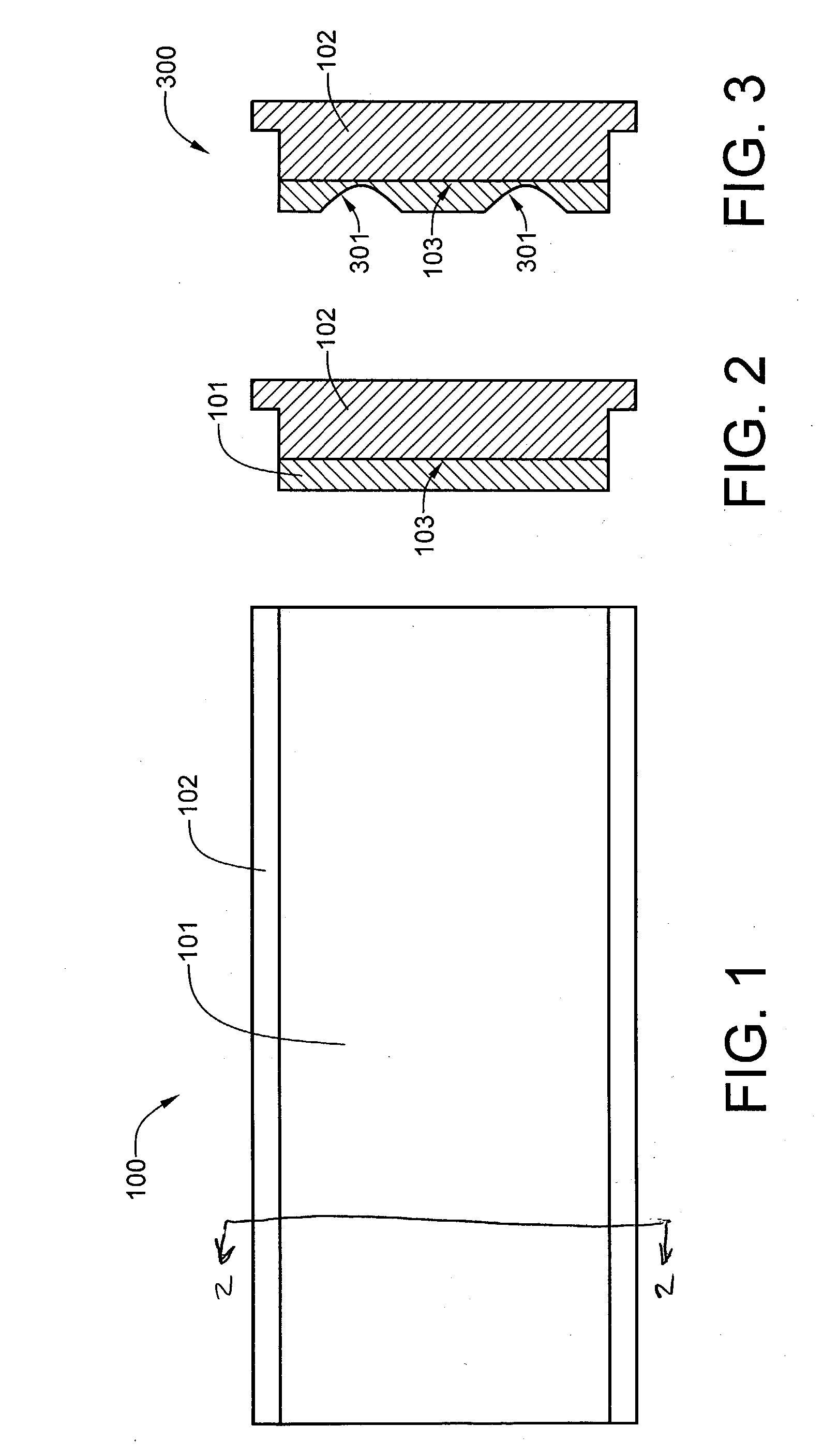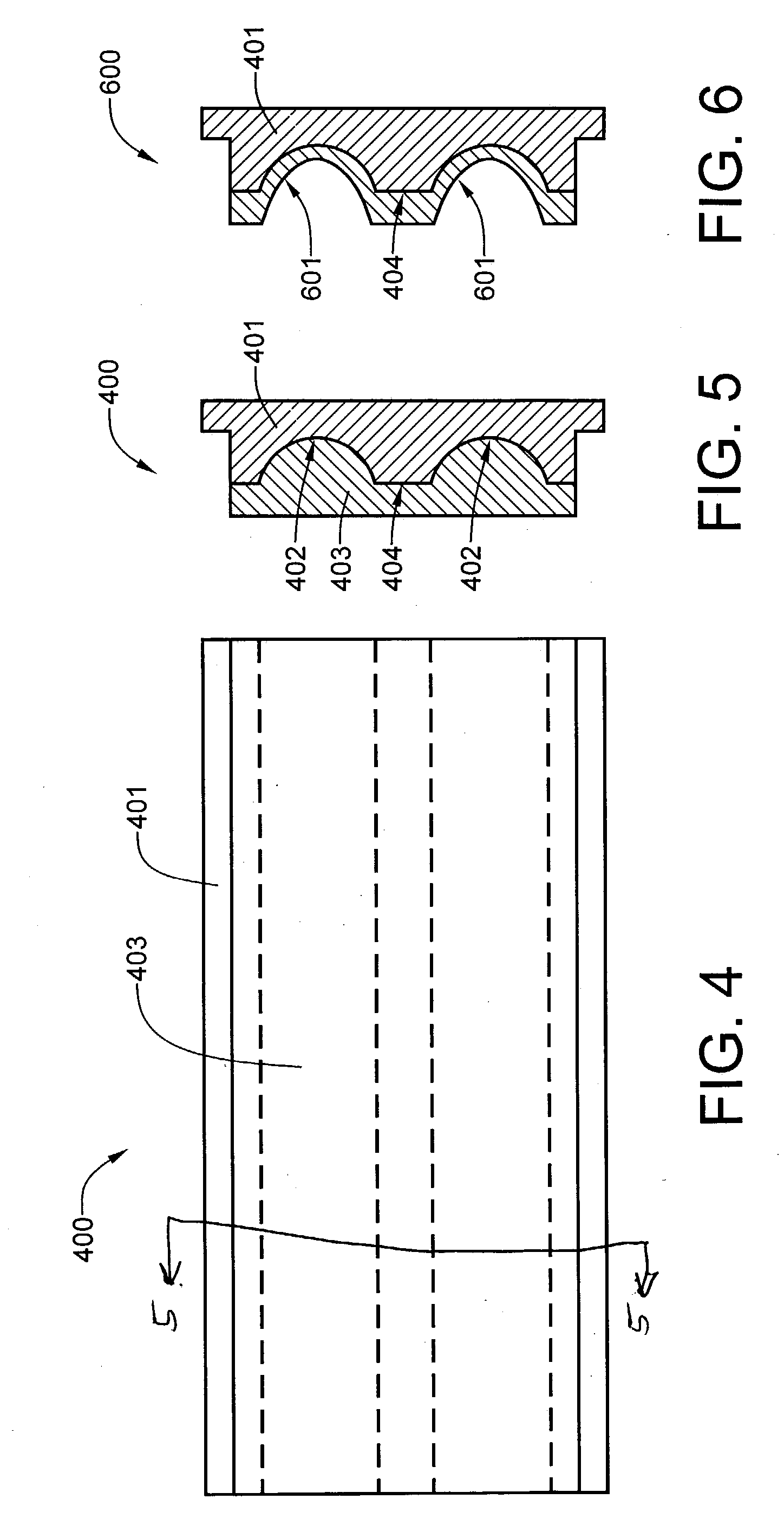Planar magnetron targets having target material affixed to non-planar backing plates
a technology of non-planar backing plates and magnetron, which is applied in the direction of electrolysis components, vacuum evaporation coatings, coatings, etc., can solve the problems of unrecoverable manufacturing occurrence, uneven surface of target eroded, and thermal expansion of backing plates 102
- Summary
- Abstract
- Description
- Claims
- Application Information
AI Technical Summary
Problems solved by technology
Method used
Image
Examples
first embodiment
[0026] Referring now to FIGS. 4 and 5, a first a first embodiment improved planar magnetron target 400 includes a backing plate 401 which incorporates a groove 402 of substantially semicircular cross section in each region where the plasma is magnetically confined. The target material 403 is applied such that the grooves are completely filled therewith. This design affords a much greater effective depth of target material, as the erosion of the target material in the confined plasma regions of the target material may continue well below the face 404 of the backing plate.
[0027] After the target of FIG. 5 is used to the point where it must be discarded, it may assume the appearance of the used target 600 of FIG. 6.
[0028] Referring now to FIGS. 7 and 8, a second embodiment improved planar magnetron target 700 incorporates the grooved backing plate 401 of the first embodiment target 400, but add the additional feature of a target material layer 701 that is formed in relief. The shaped s...
fifth embodiment
[0032] Referring now to FIG. 12, the fifth embodiment planar magnetron target 1100 includes a backing plate 1201 having primary grooves 1202 formed by steps 1203. The front of each step 1202 is undercut, which assists in the retention of the target material.
[0033] The backing plates of the various embodiments of the improved planar magnetron targets described heretofore may be manufactured from any one of a number of conventional metals currently in use, such as aluminum, aluminum alloys, steel, stainless steel, and copper. The target material may include any of the target materials presently used in the sputtering industry.
PUM
| Property | Measurement | Unit |
|---|---|---|
| erosion depth | aaaaa | aaaaa |
| adhesion | aaaaa | aaaaa |
| electric field | aaaaa | aaaaa |
Abstract
Description
Claims
Application Information
 Login to View More
Login to View More - R&D
- Intellectual Property
- Life Sciences
- Materials
- Tech Scout
- Unparalleled Data Quality
- Higher Quality Content
- 60% Fewer Hallucinations
Browse by: Latest US Patents, China's latest patents, Technical Efficacy Thesaurus, Application Domain, Technology Topic, Popular Technical Reports.
© 2025 PatSnap. All rights reserved.Legal|Privacy policy|Modern Slavery Act Transparency Statement|Sitemap|About US| Contact US: help@patsnap.com



